Dangers of Carbon Monoxide in the Home
About Carbon Monoxide
Carbon monoxide has the chemical formula CO. It is a colorless, odorless, flammable and highly toxic gas. It is a major product of the incomplete combustion of carbon and carbon-containing compounds.
CO is produced whenever a material burns. Homes with fuel-burning appliances such as gas stoves have CO problems. Common sources of CO in our homes include fuel-burning appliances and devices such as: Clothes dryers. Water heaters.... fireplaces, tobacco smoke, and car or truck exhaust that enters from attached garages.
The most common causes of carbon monoxide building up are incorrectly installed or poorly maintained or ventilated appliances – like stoves and hot water heaters.
Why is Carbon Monoxide so Dangerous
Let us first take a look at the oxygen molecule side by side with carbon monoxide.
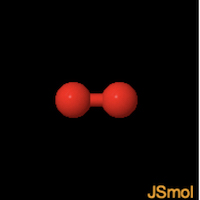
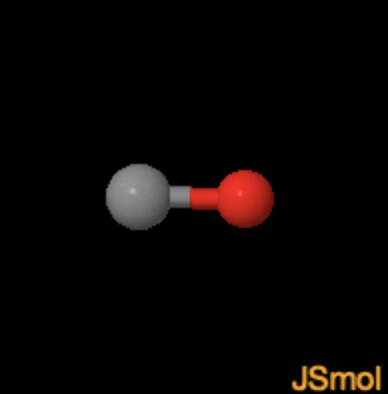
Shown above the oxygen molecule consists of two oxygen atoms covalently bound together. Carbon monoxide consists of a carbon atom bound to a single oxygen molecule.Y ou can see from the images above both molecules have a similar s.hape and size
The Oxygen Molecule (O2) is essential for plant and animal respiration, and is required for nearly all combustion. Oxygen binds to hemoglobin in the blood where it is taken to cells During aerobic cellular respiration, glucose reacts with oxygen, forming ATP that can be used by the cell.
How does Oxygen get from the lungs to Cells
Oxygen gets into the blood through tiny blood vessels around the alveoli. Red blood cells pick up the oxygen binding the oxygen molecules to hemoglobin (see blow). The red blood cells then drop off the oxygen to the body's cells. Without oxygen getting to cells the organism will die
What does the Hemogllobin Molecule Look Like
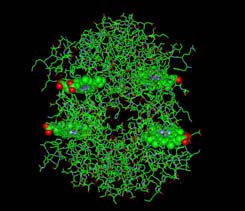
Oxygen bound to the Heme
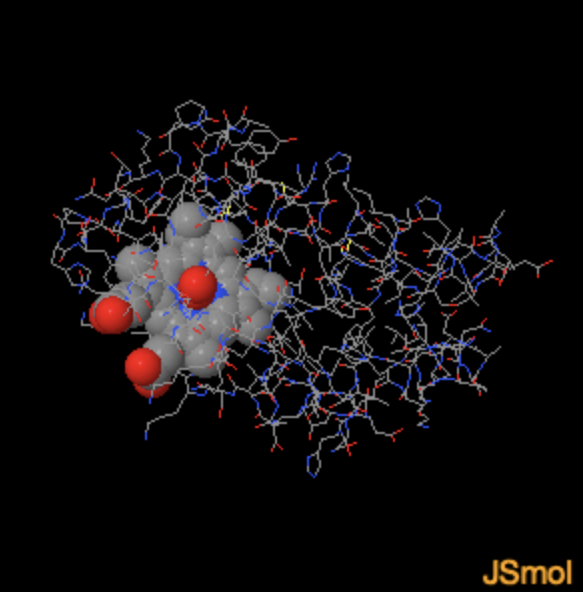
In the lungs oxygen must enter the blood A small amount of oxygen dissolves directly in the serum, but 98.5% of the oxygen is carried by hemoglobin
Shown here is one of the four subunits of the hemoglobin molecule. A molecule of oxygen (O2) is shown bound to Fe.
The Fe2+ ion is coordinated to 4 N's on the pyrrole ring, The 5th ligand is a proximal His (the 8th amino acid on helix F). Oxgen is shown bound to the 6th coordination site pulling the Fe into the plane of the ring. To see the binding sites clearly click on the link to be able to rotate the image using Jsmol....For Jsmol link.
Carbon Monoxide bound to the Heme
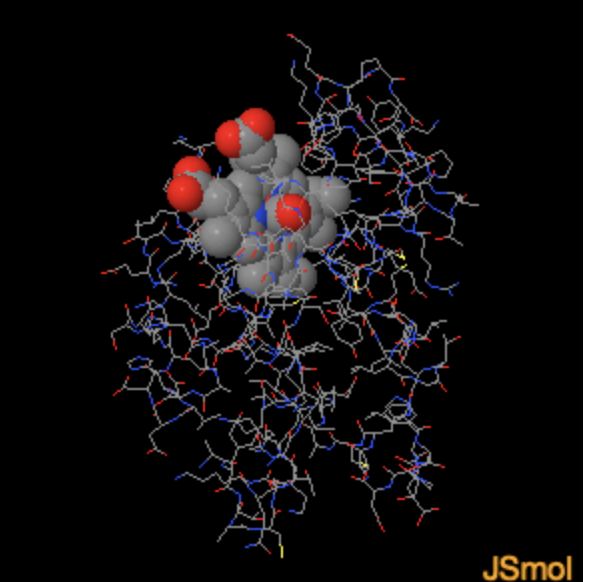
Carbon monoxide also binds coordinately to heme iron atoms in a manner similar to that of oxygen, but the binding of carbon monoxide to heme is much stronger than that of oxygen. The preferential binding of carbon monoxide to heme iron is the main reason for carbon monoxide poisoning.
CO binds to the same heme Fe atoms that O2 binds to.
CO displaces oxygen from hemoglobin because it has a 200X greater affinity for hemoglobin. Note: To see the binding sites clearly click on the link to be able to rotate the image using Jsmol....For Jsmol link.
Symptoms of Carbon Monoxide Poisoning
"...The symptoms and signs of carbon monoxide poisoning are variable and nonspecific. The most common symptoms of CO poisoning are headache, dizziness, weakness, nausea, vomiting, chest pain, and altered mental status....Symptoms of severe CO poisoning include malaise, shortness of breath, headache, nausea, chest pain, irritability, ataxia, altered mental status, other neurologic symptoms, loss of consciousness, coma, and death; signs include tachycardia, tachypnea, hypotension, various neurologic findings including impaired memory, cognitive and sensory disturbances; metabolic acidosis, arrhythmias, myocardial ischemia or infarction, and noncardiogenic pulmonary edema, although any organ system might be involved...." source CDC
Guidance for Management of Confirmed or Suspected CO Poisoning.
"...Administer 100% oxygen until the patient is symptom-free, usually about 4-5 hours. Serial neurologic exams should be performed to assess progress, and to detect the signs of developing cerebral edema...."-- CDC
Sources and Readings
How to lithium ion batteries work --Energy.gov
Advanced Batteries -GAO.gov
Lithium Ion Batteries --Sandia Labs